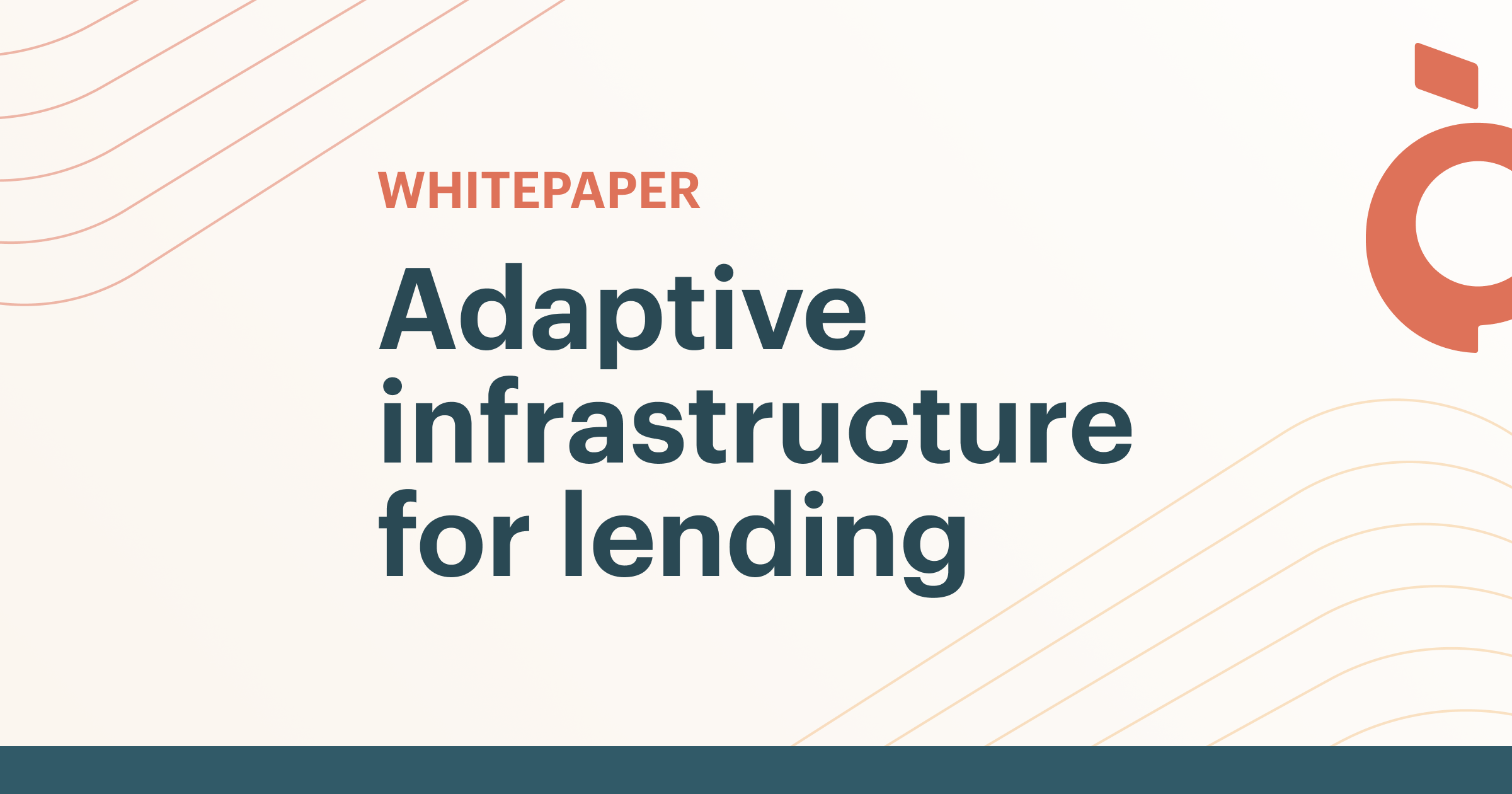5 reasons lenders need adaptive infrastructure

An excerpt from the whitepaper
Fintechs, who have been this decade’s primary instigators of lending innovation, might seem poised to be the primary and perennial beneficiaries of continued technological progress. But things aren’t so straightforward. Many of today’s fintechs are falling into the same trap established lenders did long ago: They’re launching modern lending programs on rigid infrastructure designed for the present, not the future. We’ve seen the repercussions of this choice over the past decade, as established lenders hobbled by rigid infrastructure ceded market share to fintechs, who have gobbled up about half of all personal loan originations.
It’s become expected for lending cores to bake in assumptions about loan configurations, ancillary software systems and regulatory requirements—these assumptions make cores cheaper and faster to build. But when markets shift and novel lending constructs emerge, established lenders find themselves handcuffed to outdated infrastructure, sometimes requiring years of retrofitting just to launch new lending programs.
To compound the problem, the rate of change in lending—as in all of technology—is accelerating. And so it will take even less time for today’s modern-yet-rigid lenders to be eclipsed by the next crop of nimble upstarts with newer and better ideas. Rigid lenders will once again lose market share in the struggle to keep pace with a rapidly changing landscape.
But lenders have control over their fate, and can prioritize investments in adaptive infrastructure that enables them to 1) continually test and iterate, even at scale; and 2) continually launch new lending programs with speed and flexibility. For those lenders who fail to make these investments, there will be five major headwinds as lending innovation and market evolution continue their forward march.
Risk #1: Competitive innovation
Technology has lowered the barrier to entry in financial services, spurring a profusion of venture-backed startups with nothing to lose and everything to gain. Some of them have succeeded in disrupting existing paradigms and seizing market share from established lenders—one recent example being BNPL. While such innovations are net positives for borrowers, they can exact a heavy toll on existing lenders who can muster only a sluggish response to novel competitive threats.
However, existing lenders with established brands and loyal customer bases hold some important advantages against first-movers. They must complement these advantages with the agility to reconfigure loan behavior and to rapidly launch new products in a wide range of asset classes, including innovative constructs. While no one can perfectly predict the next disruptive trend, with North American fintechs alone having raised $80.8B in 2021 it’s certain that BNPL will not be the last novel construct to sap market share from slower incumbents.
Risk #2: Your evolving tech stack
If there’s one thing that’s certain about the array of software systems and vendors your lending programs depend upon, it’s that what’s ideal now won’t be ideal in a few years. And this is part of the rub with rigid lending cores—when they ossify, so does your tech stack. This means you can be stuck with the same array of vendors long after they’ve outgrown their usefulness to you. The abundance of newer vendors adding value for lenders—from card issuance to fraud prevention to financial data—illustrate one of the opportunity costs of a rigid tech stack.
Instead, seek a core with modular architecture that supports your ability to switch vendors and add new ones over time, and to make other crucial updates to your software infrastructure. In this way, you won’t be handcuffed by vendors you don’t want.
Risk #3: Market disruptions
Recessions, natural disasters, conflicts and pandemics are just a few of the market disruptions we may face in coming years. If 2020 taught us anything, it’s that everything can change overnight. During the COVID-19 pandemic, lenders were forced to enable remote servicing—quickly transitioning call center workforces away from an office environment. Lenders also had to find a way to offer repayment flexibility to borrowers facing hardship on a scale and in ways that were...